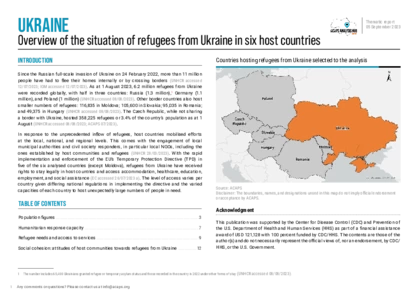current crises
in
Hungary
These crises have been identified through the INFORM Severity Index, a tool for measuring and comparing the severity of humanitarian crises globally.
HUN002 - Displacement from Russia-Ukraine conflict
Last updated 28/03/2025
Drivers
Displacement
Crisis level
Country
Severity level
1.5 Low
Access constraints
0.0
Analysis products
on
Hungary
05 September 2023
Ukraine: regional overview of Ukrainian refugees in host countries
DOCUMENT / PDF / 2 MB
This report provides an overview of the situation of refugees from Ukraine in six host countries: the Czech Republic, Hungary, Moldova, Poland, Romania, and Slovakia. The report aims to compare the scale of displacement in each country and their response capacity.
Attached resources
01 April 2022
Hungary: Ukrainian refugees
DOCUMENT / PDF / 509 KB
As at 28 March 2022, more than four million people had crossed international borders since the start of the hostilities in Ukraine on 24 February 2022. The rapid influx of migrants and refugees into the country has already posed a challenge to reception capacities, which the Hungarian Government has reduced in recent years to discourage migration.



